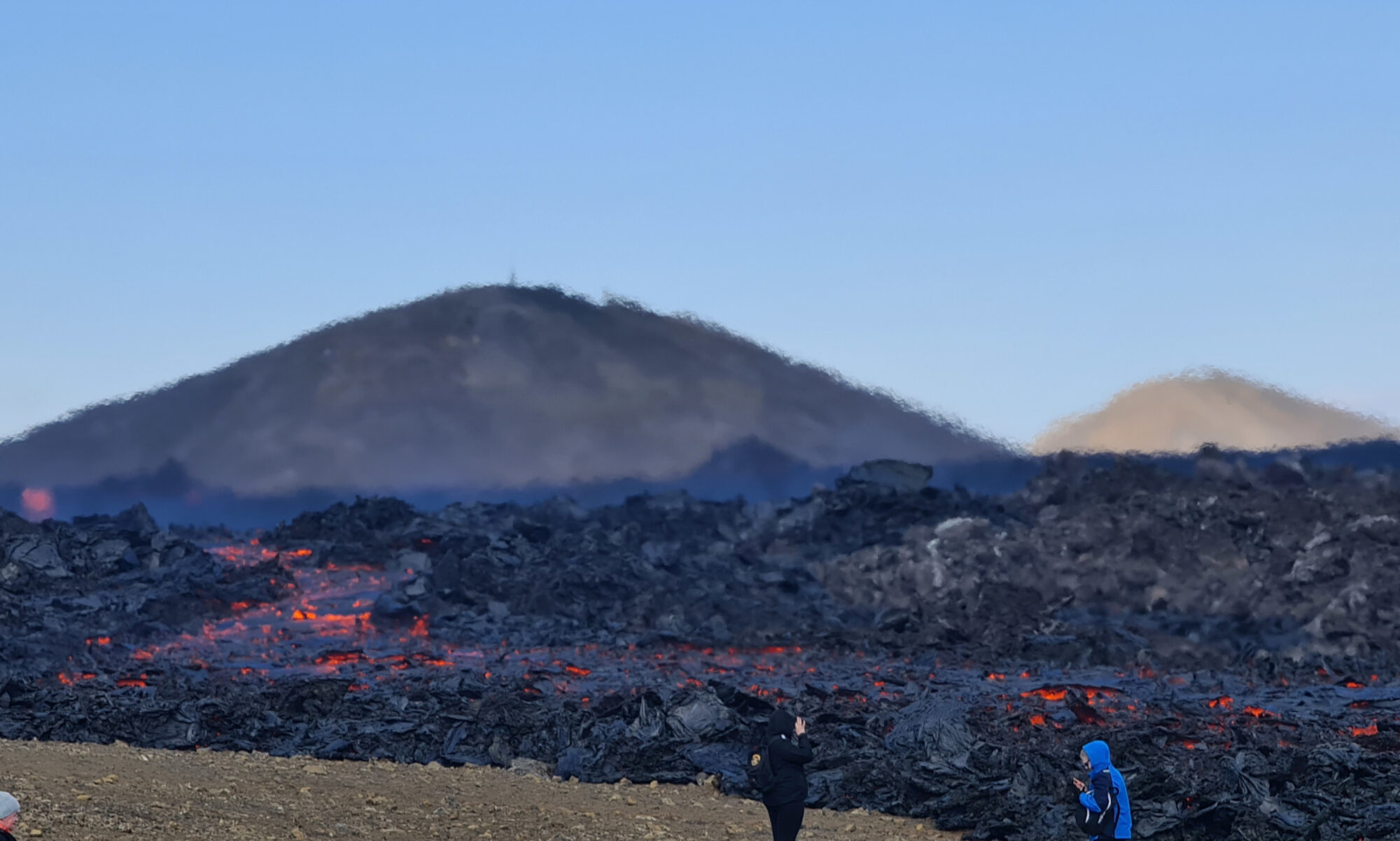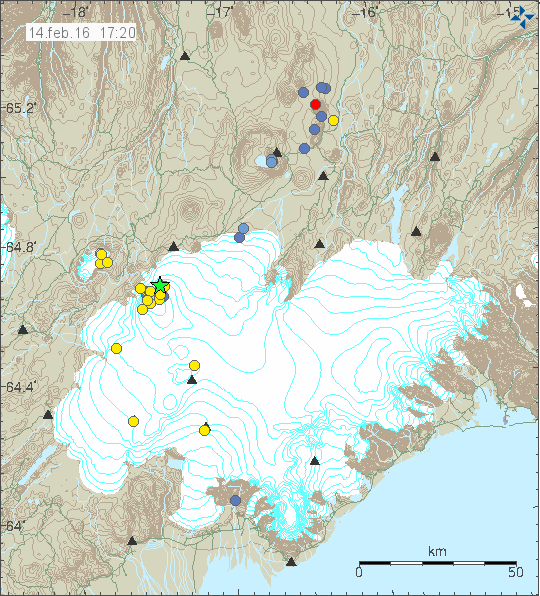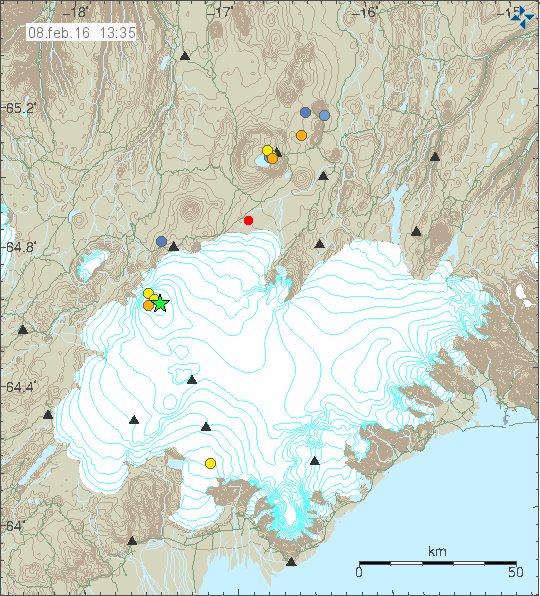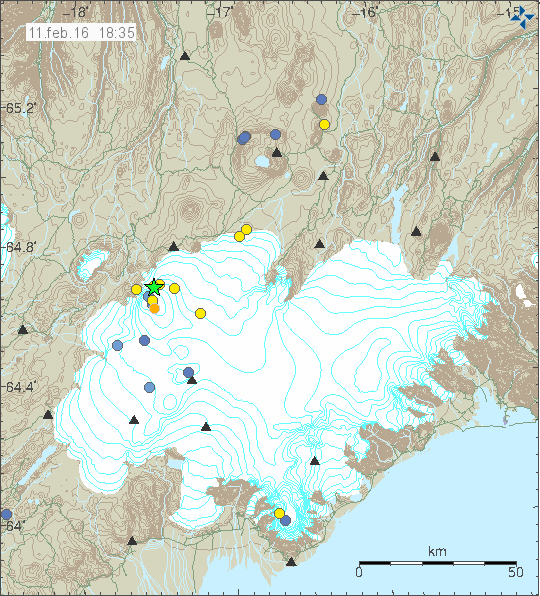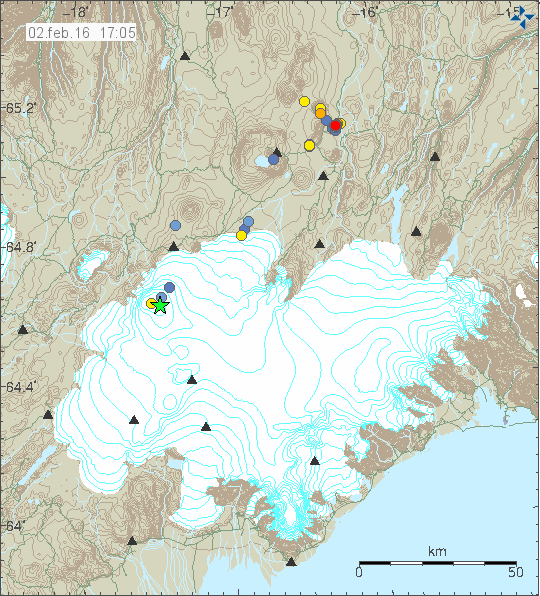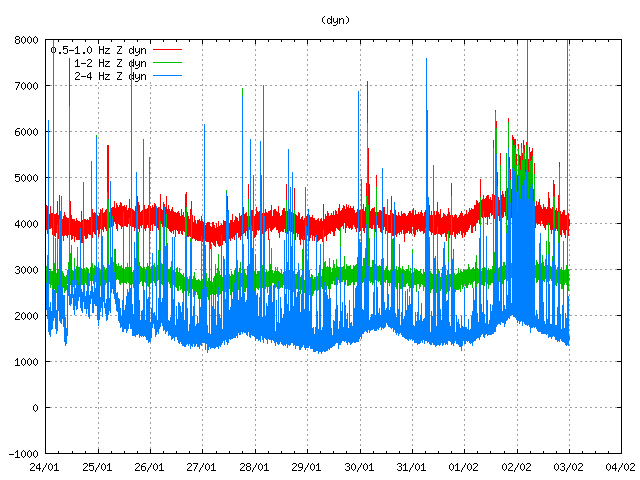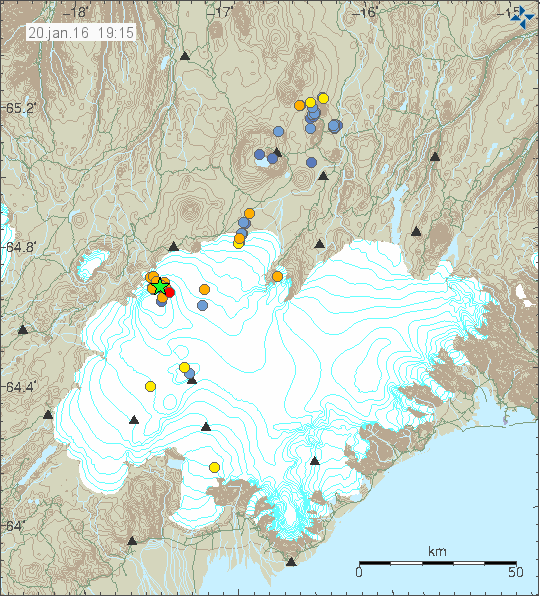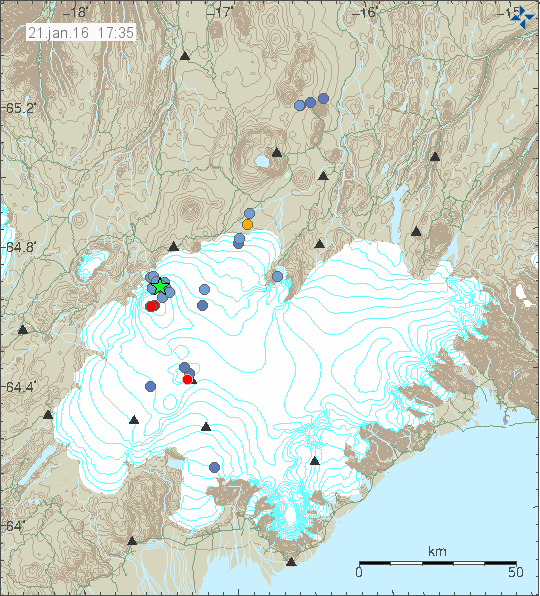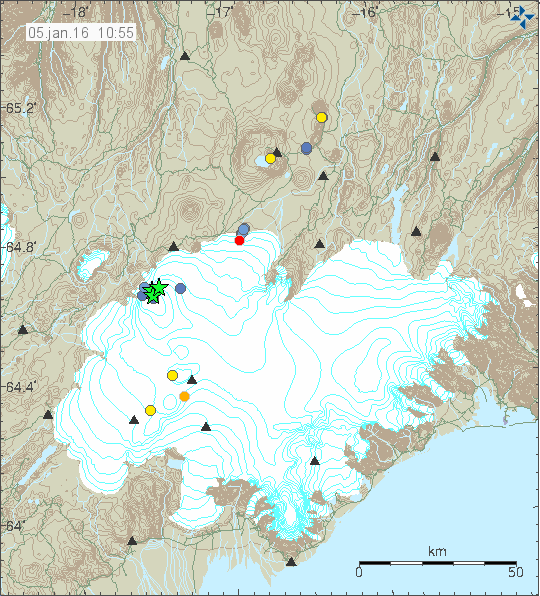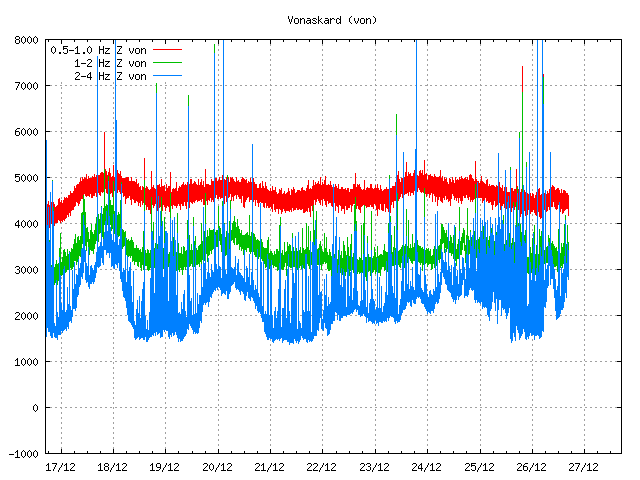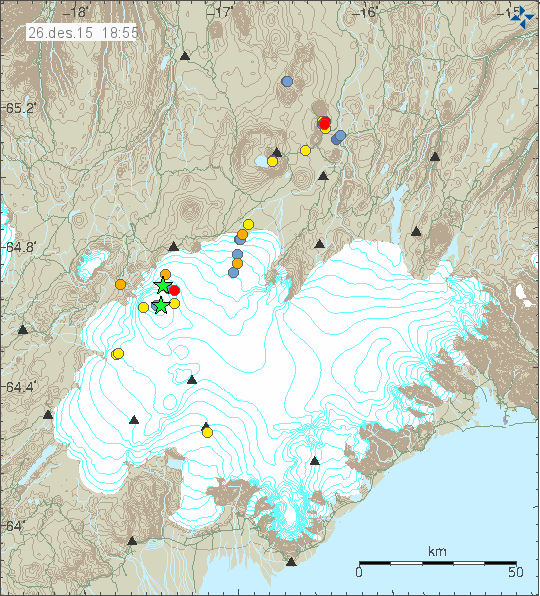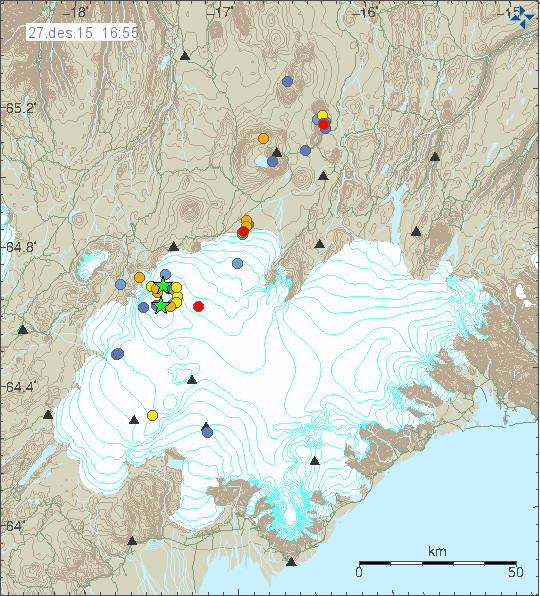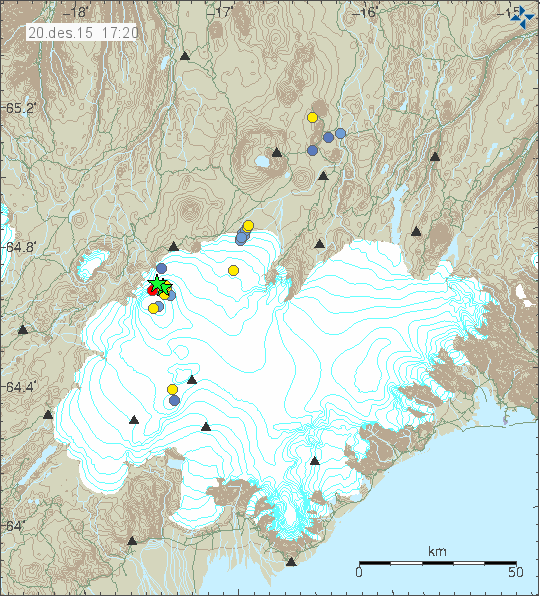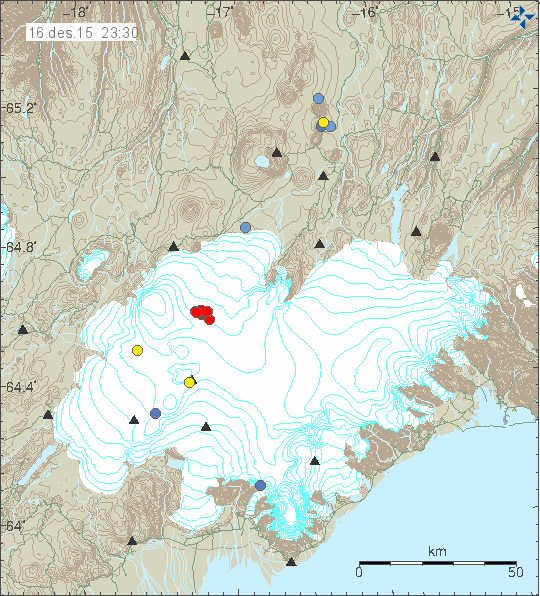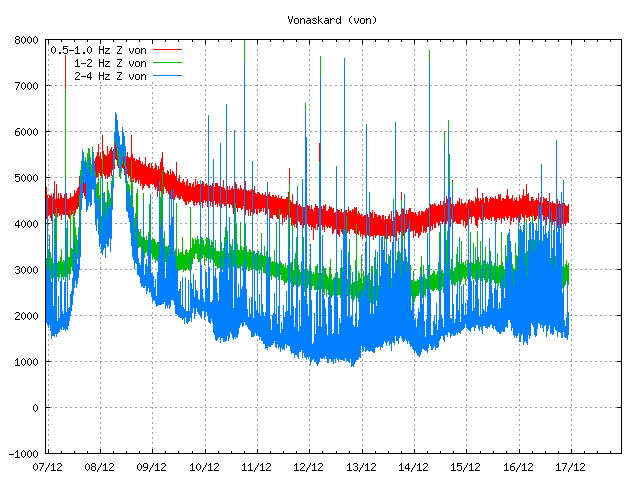Today (18-February-2016) and yesterday (17-February-2016) there has been deep earthquake activity in Askja volcano and in Bárðarbunga volcano.
Askja volcano
Since March 2010 Askja volcano has been having period activity taking deep inside Askja volcano. This suggests that both deep dyke intrusions are taking place in the volcano system, yesterday and today (close to Dreka area and Herðubreiðartögl volcano). None of those dyke intrusions is going to reach the surface. They are going to remain at depth. This does show that since 2010 magma activity at depth is possibly increasing in Askja volcano. When a eruption might take place is impossible to know, but it might be a really long time until it happens. Unless Bárðarbunga volcano enters the mixture and speeds things up. Earthquake activity close to Herðurbreið are normal tectonic earthquakes at shallow depth >10km.
Bárðarbunga volcano
Most of this week Bárðarbunga volcano has been quiet. That might be about to change, since today few deep earthquake appeared in the northern part of the volcano. This suggests that fresh magma from deep magma chamber is pushing up now. The resulting earthquakes are due to pressure change inside the volcano that fractures the rock in the process. Earthquake activity has also been in the dyke (Holuhraun eruption) at the edge of the glacier. I don’t know why that is. A clear dyke intrusion took place in Hamarinn volcano on 17-February-2016, with earthquakes at the depth of 12 – 13 km. This is the first dyke activity in this volcano for a while now. Magma is shallow in Hamarinn volcano, making it sensitive to pressure changes and possible eruptions.
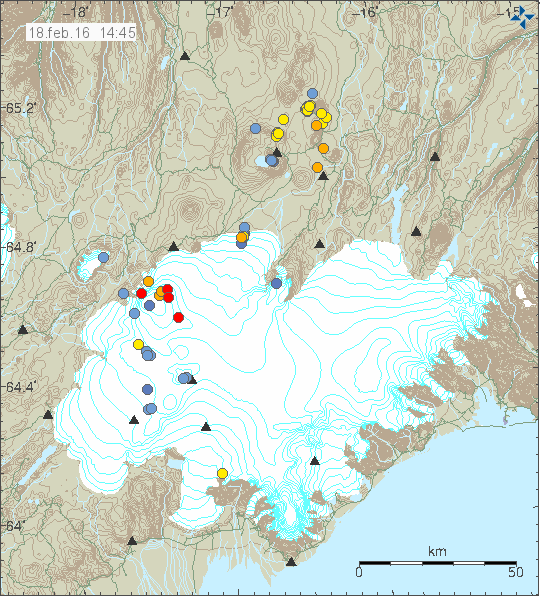
Earthquake activity in Askja and Bárðarbunga volcanoes. Along with earthquake activity close to Herðurbreið area. Copyright of this image belongs to Iceland Met Office.
Maps of Iceland
For people who want to know what I’m often taking about there is a map that can be bought. This is a geological map of Iceland, it shows all the volcanoes, both active and extinct ones in Iceland. Along with fault zones and fissure swarms. It can be bought from here. Please note that I don’t get anything from this, it’s just so that people can have access to information about Iceland. The prise of this map is €13,80 without shipping, or 15,31 USD without shipping today.
Donations
Please remember to support my work with donations. I’m getting rather broke as it currently stands. Thanks for the support.
